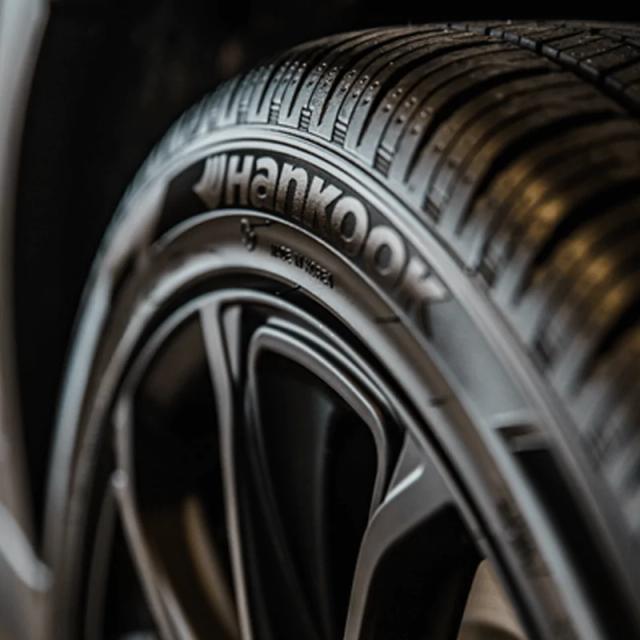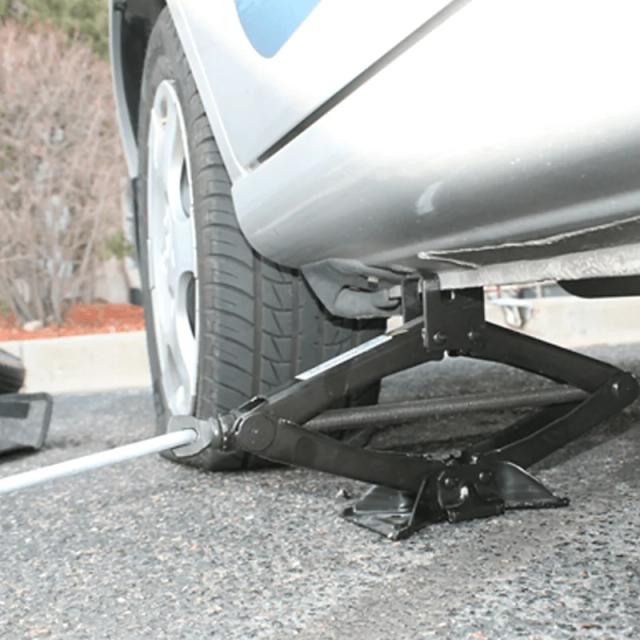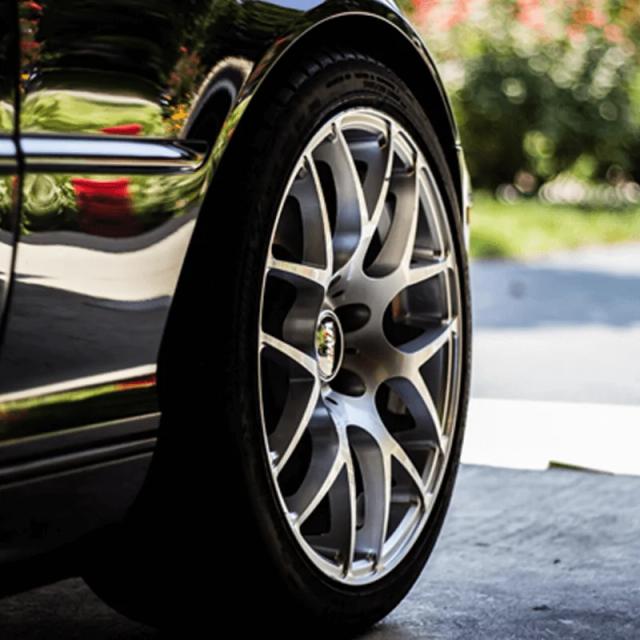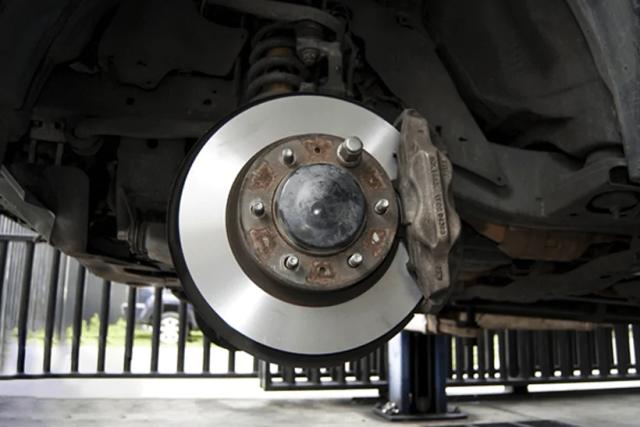Whether you're a seasoned DIYer or just car about your car getting you from A to B, knowing how to check and replace your brake pads is a valuable skill that could save a life one day. You never know when you may suddenly need to brake, and you don't want to risk them failing when you need them most. We're going to go through the signs you need to look out for and how to change them yourself!
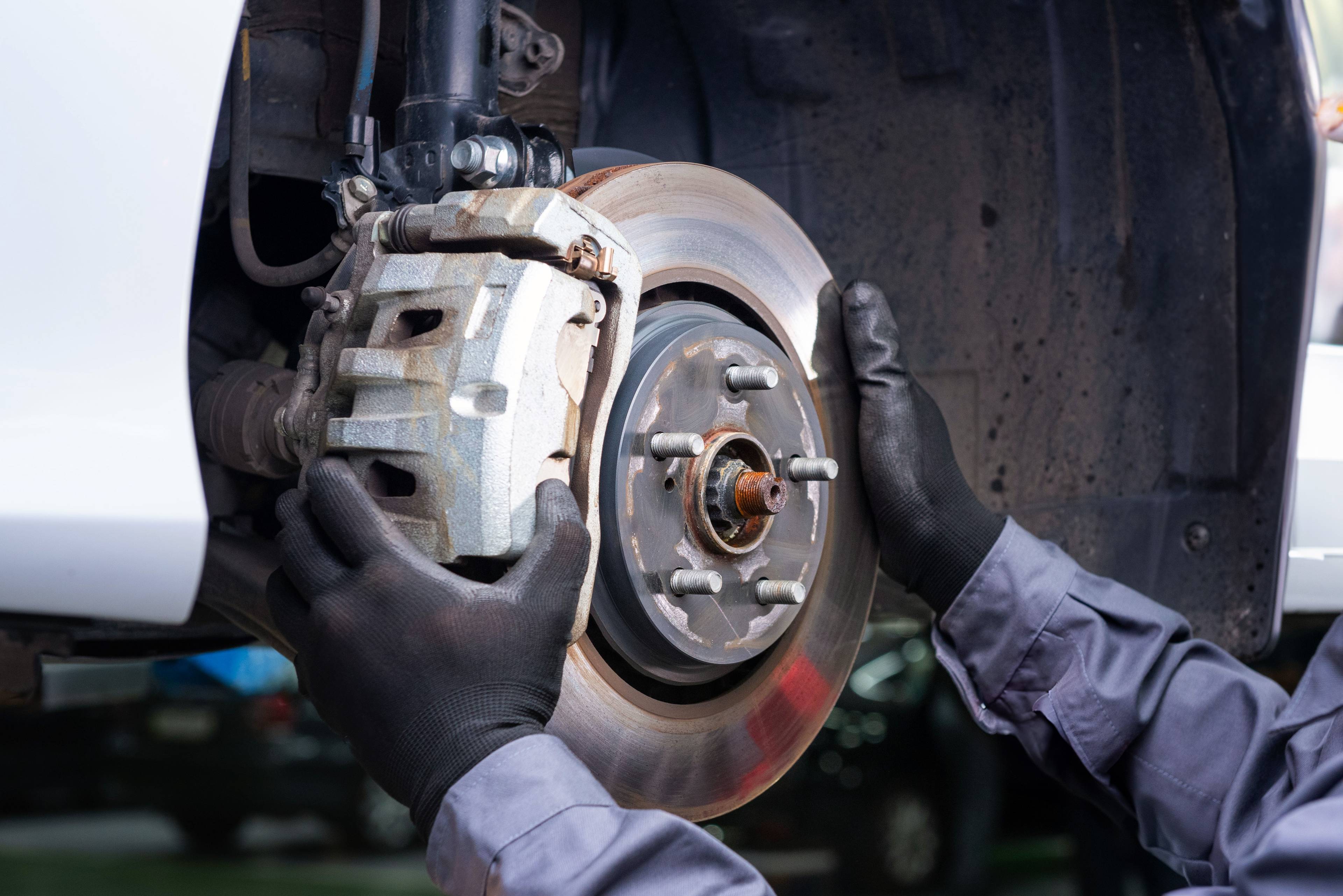
Changing brake pads is a little bit complicated, especially if you've not done it before, but if you already have a good level of mechanical knowledge and feel confident in your ability to do the job, you should be up to the task.
You can get your new brake pad sets from our brake discs and pads page in our braking section. Just enter your reg number or make and model and we’ll only show you the parts available for your vehicle.
In this guide, we'll explain when, why and how you should change your brake pads, covering:
How Do Brake Pads Work?
How Often Do I Need to Replace the Brake Pads?
How Do I Know if Brake Pads Need Replacing?
What Will I Need to Change My Brake Pads?
Before You Start Changing the Brake Pads
How to Change Your Brake Pads - 10 Simple Steps
Brake Pad Know-How
How Do Brake Pads Work?
Brake Pads sit inside the Brake Caliper, on either side of the Brake Disc. When you press the brake pedal, hydraulic pressure forces the Caliper shut, pushing the pads against the disc. This creates friction, slowing the disc, and your car. Brake pads are made from durable materials like iron, copper, steel, and graphite to withstand high heat and pressure. Still, they wear down over time and must be replaced regularly.
How Often Do I Need to Replace the Brake Pads?
Brake pads typically need replacing every 25,000–60,000 miles, but this depends wildly on many factors, such as driving style, vehicle weight, mileage and where you drive. It's important to check your brakes regularly to know when they need replacing.
How Do I Know if Brake Pads Need Replacing?
Most modern cars will have brake pad wear sensors, meaning a warning light will appear on the dash when one of the pads needs changing. But not all cars are fitted with sensors (especially not older or vintage vehicles), so you'll need to check the brake pads regularly or have them checked by a mechanic. Below, we've shared some signs you might notice if one or more of your car's brake pads are wearing thin.
Screeching or grinding sounds : A metallic screech means the pads are low. Grinding means they’re likely worn out completely—stop driving and replace them immediately.
Car pulling to one side: Could indicate uneven pad wear or other brake issues.
Vibrating brake pedal: Suggests warped or damaged pads.
Visible wear: If the pad thickness is below 6mm, it’s time to replace them. Below 3mm is unsafe.
'Spongey Brakes': You may notice that your brake pedal feels a bit spongey, or that you need to press harder for them to work.
What Will I Need to Change My Brake Pads?
Before you can begin changing your brake pads, you'll need the following tools and parts:
What You'll Need |
|---|
Brake Pad Fitting Kit (if applicable for your make and model) |
Wire Brush |
Floor Jack |
Screwdriver (flathead) |
C-Clamp |
Socket-Set |
Torque Wrench |
Allen Key Set |
Pliers |
Ruler |
It will make the job more manageable if you have the following aerosols and lubricants to hand:
For your own personal safety and comfort, you will also need some safety equipment like glasses, gloves and a mat to kneel on.
Before You Start Changing the Brake Pads
Before attempting to change the brake pads, you should ensure you feel confident and qualified. Your car's braking system is critical to the overall safety and function of your car, and carrying out repair work incorrectly could cause your brakes to fail. You should only attempt to follow the process outlined here if you have some experience with automotive repairs and feel confident you can do the job right.
The braking system can also vary quite drastically between different car makes and models, so you should always check your owner's manual for more specific advice.
How to Change Your Brake Pads - 10 Simple Steps
Remove the Wheel
Park on a level surface, apply the handbrake, and loosen the lug nuts. Raise the car with a jack, secure it with axle stands, then remove the wheel.Clean the Brake & Remove Guide Pin
Use brake cleaner to remove dust and grime. Hold the guide pin with a spanner and unscrew the bolt.Remove the Caliper
Unscrew the caliper bolt and slide it out. Use a pry bar if needed, but avoid straining the brake hose.Remove the Old Pads
Take off the clips and lift out the pads. Tap gently if they’re stuck.Inspect the Disc & Brake Lines
Check for deep grooves on the disc—if present, replace it (always in pairs). Inspect rubber and metal brake lines for cracks or corrosion.Fit the New Pads
Insert the new pads and secure with clips. Apply copper grease to the edges (not the friction surface). Refit the caliper and tighten bolts. You may need a caliper rewind kit to adjust the piston.Check Brake Fluid
Press the brake pedal several times. Check and top up the brake fluid if needed.Replace the Wheel
Put the wheel back on and loosely secure the lug nuts.Lower the Car & Tighten Lug Nuts
Remove axle stands, lower the car, and tighten the nuts diagonally.Test the Brakes
Take a short, safe test drive. Make sure the brakes respond smoothly and there are no unusual noises.
Brake Pad Know-How
Now that you know how to change brake pads, you're ready to get started – head over to our brake discs and pads shop to ensure you've got everything you need before you begin, including brake discs and pads. You can find plenty more informative how-to guides in our auto knowledge hub, from changing a tyre to flushing the coolant system.
Although changing brake pads is by no means a complex task, the braking system is critical to the safety of your car, so this work must be carried out correctly. We'd only recommend performing this job yourself if you feel 100% sure you can do it properly. All car makes and models have different requirements, so GSF Car Parts cannot accept liability for damage caused by incorrect repair work.
Shop Braking System Parts at GSF Car Parts Online and In-Store
All our braking system parts are from trusted brands in the motoring industry, so you can count on them to be reliable and of excellent quality. Plus, our low-price promise means you can always expect great value, too.
We offer free UK delivery on all online orders over £25, plus 60-day returns*. We also know you want to get your car up and running as soon as possible, which is why we offer a Click and Collect service that allows you to get your new braking system part in just an hour.
So, buy braking system parts from us with confidence today. Or if you're close to one of our 200+ store locations across the UK & Ireland, drop by and our experienced staff will be able to direct you to the correct part for your vehicle.

